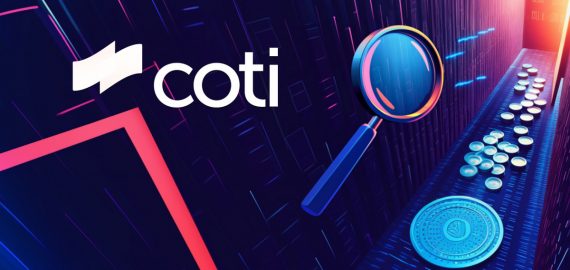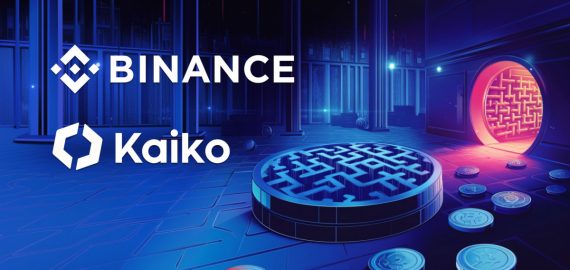How Shardeum’s Linear Scalability Could Change Blockchain Forever


In Brief
Shardeum’s dynamic state sharding enables true linear scalability, solving the Blockchain Trilemma by balancing security, decentralization, and performance without reliance on centralized Layer 2 solutions.

The blockchain industry has long struggled with the “Blockchain Trilemma,” a concept that refers to the difficulty of attaining scalability, security, and decentralization at once. Traditionally, improving one of these features generally necessitates concessions on the others. However, the introduction of dynamic state sharding offers a viable solution to this trilemma. It provides a balanced approach that might reshape the future of blockchain and Web3.
Understanding Blockchain Trilemma and Sharding
According to the Blockchain Trilemma, no blockchain system can achieve ideal decentralization, security, and scalability at the same time. Enhancing one element frequently leads to trade-offs with others. For example, increased scalability could threaten decentralization or security. This trilemma has been a focus topic in blockchain discussions, spurring research and innovation to discover solutions that can balance these three important factors.
Sharding has emerged as a solution for addressing the trilemma’s scalability component. The blockchain network is divided into smaller parts known as “shards,” each of which may handle its own transactions and smart contracts. This split enables parallel processing, which considerably increases the network’s total throughput and efficiency.
A Deeper Dive into the Dynamic State Sharding
Dynamic state sharding is an improved version of the sharding concept. Unlike static sharding, which uses preset and fixed shards, dynamic state sharding allows the network to change shards in real-time in response to unpredictable circumstances and needs. This flexibility provides optimal resource usage and network performance, even when conditions change.
Dynamic state sharding divides the blockchain’s full state into separate segments, which are controlled by various nodes. This strategy decreases the storage strain on any single node, allowing the network to extend economically while not disturbing existing activities or reducing performance. The flexibility of dynamic state sharding enables the system to adapt to changing conditions within the blockchain ecosystem.
Shardeum’s Implementation of Dynamic State Sharding
Shardeum, an autoscaling Layer 1 blockchain, incorporates dynamic state sharding as a key component of its architecture, allowing for smooth scaling. This technique assures that as the network’s capacity grows, transaction costs remain low and throughput remains high. Shardeum improves accessibility by streamlining transaction-level validation and minimizing the computational strain on validator nodes, allowing a broader range of users to run nodes and, eventually, enhancing decentralization.
Unlike static state sharding, Shardeum’s dynamic framework gives each node a variable address range that spans several shards. To preserve redundancy, address assignments are deliberately overlapped, maintaining data integrity and fault tolerance. Furthermore, consensus is established at the transaction level, allowing multi-shard transactions to be handled simultaneously rather than sequentially.
Centralization Concerns in Layer 2 Solutions
The increased use of Layer 2 solutions in the Ethereum ecosystem has raised worries about centralization. While rollups and sidechains increase scalability by moving transactions away from the main chain, they frequently rely on centralized sequencers or operator nodes to batch and submit transactions.
This introduces possible points of failure, governance problems, and reliance on a small number of players, raising concerns about whether these solutions actually reflect the decentralized purpose of blockchain. The dependence on centralized bridges for asset transfers across Layer 1 and Layer 2 networks raises security concerns, as evidenced by a number of high-profile bridge vulnerabilities in recent years.
In contrast, Shardeum’s strategy seeks to solve scalability while maintaining decentralization at the base layer. Shardeum uses dynamic state sharding in its Layer 1 protocol to disperse network load among numerous independent shards without relying on external infrastructure. Validators engage in transaction-level consensus, guaranteeing that no one entity has authority over transaction ordering and execution. This design reduces centralization concerns while retaining security and scalability, making it a viable alternative to existing Layer 2 scaling approaches.
Proof Positive of Linear Scalability
The notion of linear scalability is a major advancement in blockchain. It means that the network’s ability to handle transactions grows proportionately with the addition of more nodes. In regular blockchain systems, adding more nodes does not always result in higher performance and might occasionally provide more complexity and possible points of failure.
Shardeum’s dynamic state sharding tackles this issue by allowing the network to automatically modify the number and size of shards in response to the current demand. This auto-scaling feature ensures that when more nodes join the network, the transaction processing capacity grows proportionally, resulting in real linear scalability.
While dynamic state sharding presents a promising solution to the Blockchain Trilemma, it is not without obstacles. Implementing such a system necessitates complex algorithms for managing dynamic shard allocation and ensuring data integrity throughout the network. To avoid such weaknesses, maintaining security in a dynamically sharded system requires robust consensus methods and continuous monitoring.
Furthermore, the intricacy of dynamic state sharding might provide difficulties in terms of development and maintenance. Ensuring that the system stays efficient and safe as it grows necessitates continuous study and improvement. Furthermore, educating the larger blockchain community on the benefits and complexities of dynamic state sharding is critical for wider adoption.
Shardeum’s Mainnet Launch
Shardeum is preparing to alter blockchain scalability with its novel approach to dynamic state sharding, with the mainnet planned to launch in 2025. This innovation might position Shardeum as a leader in addressing the long-standing Blockchain Trilemma.
If successful, dynamic state sharding might be a game-changer for blockchain networks, demonstrating how they can attain linear scalability without violating key principles. The impending mainnet launch will be a watershed moment, providing real-world information regarding the efficacy of this technology. Seeing its influence firsthand will give insight into its practical uses and the larger implications it may have for the growth of blockchain ecosystems.
Disclaimer
In line with the Trust Project guidelines, please note that the information provided on this page is not intended to be and should not be interpreted as legal, tax, investment, financial, or any other form of advice. It is important to only invest what you can afford to lose and to seek independent financial advice if you have any doubts. For further information, we suggest referring to the terms and conditions as well as the help and support pages provided by the issuer or advertiser. MetaversePost is committed to accurate, unbiased reporting, but market conditions are subject to change without notice.
About The Author
Victoria is a writer on a variety of technology topics including Web3.0, AI and cryptocurrencies. Her extensive experience allows her to write insightful articles for the wider audience.
More articles

Victoria is a writer on a variety of technology topics including Web3.0, AI and cryptocurrencies. Her extensive experience allows her to write insightful articles for the wider audience.

















































